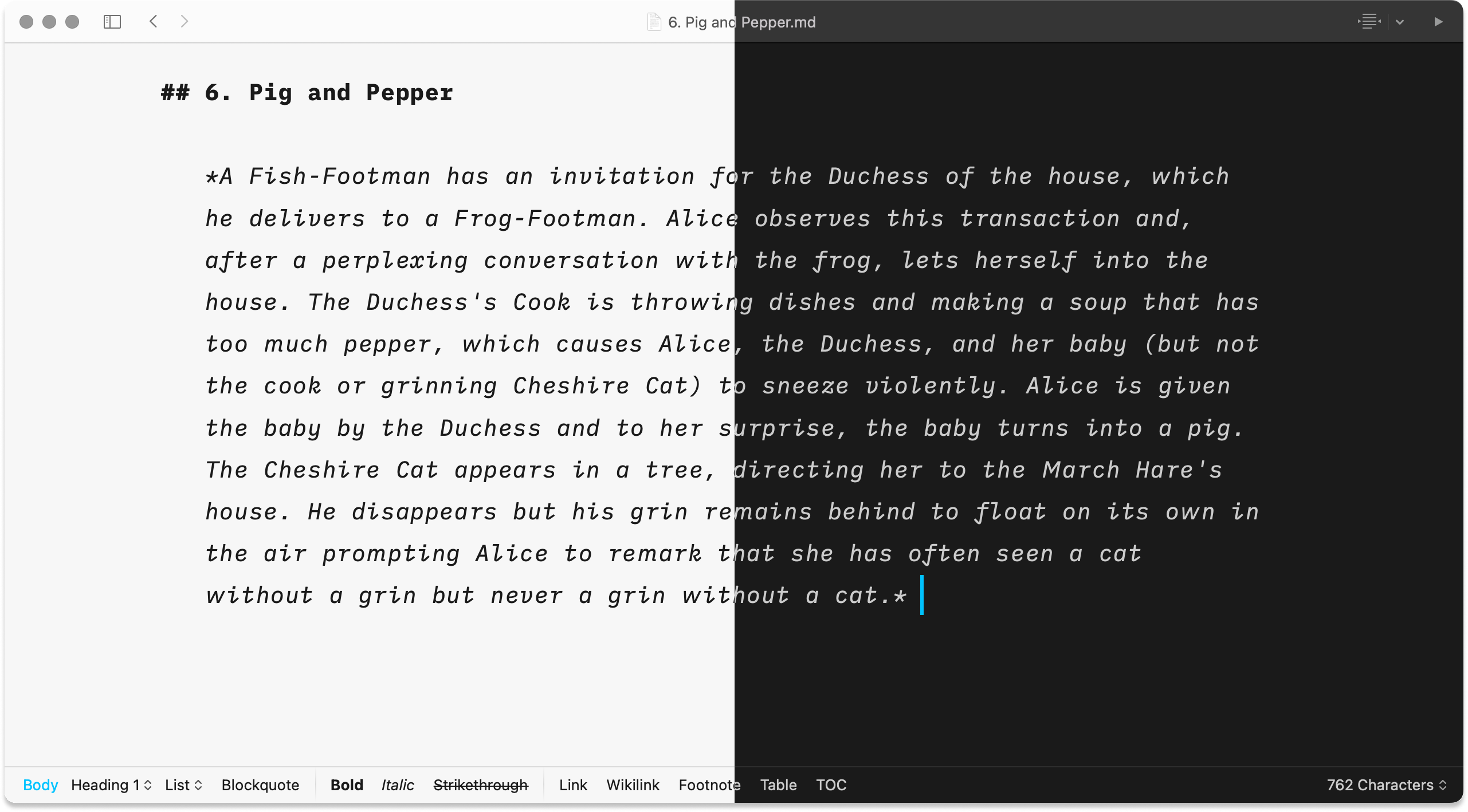In the second post on writing your first novel, you’ll learn how to create memorable characters and craft unique worlds.
Every novel needs characters and a world they inhabit. They could be termites living in the savannah, gods inhabiting other dimensions, or just people who live in a world much like ours. Your job is to make those characters and the world believable.
Just a Routine Check-Up
But first, did you manage to push out around one page (420 words) a day? What went well—or didn’t?
Don’t worry if distractions got in the way or things didn’t go as planned. Life happens—and you can always experiment with other ways to help you gain some momentum, for example:
- Write at a different time, maybe before the household wakes up
- Try somewhere else to write: the bedroom, outdoors, a coffee shop
- Mute notifications. Better still, switch off your phone
- Try time management tools like a Pomodoro timer.1
When you feel ready, up the tempo a bit to around 840 words per day. Focus on improving your speed and efficiency. Think less and write more.
Your other goal is to explore your story further by developing your characters, your world, and the tone of your novel. Let’s dive into that now.
1. Meet Your Characters
Crafting characters is easily one of the most fun parts of planning a novel. Start with some basics: Names, ages, genders, and physical descriptions. Sketch them, or use photos you find online.
Think about traits and mannerisms too. For example, how do their voices sound? What unique words do they use when they speak? What clothes do they wear?
“…the characters must come fully to life in your imagination. Then objectively and accurately tell just how they looked and what they did.” –Brenda Ueland, If You Want to Write
If you’re unsure about who your characters will be, here’s a trick: Make a list of your five favorite characters from books, movies, or series, and think about what made them memorable. AI tools can also help you get unstuck.2
Once you have a list of who your characters are, start expanding their:
Backstory: What are their past experiences? How was their upbringing? What friends, family members or events shaped them?
Motivations and goals: Everybody wants something, usually something they don’t have. Try to understand their driving forces, goals, and desires.
Personality: Define their strengths, weaknesses, and behavioral traits. Diverse and flawed characters are often more interesting.
Relationships: Explore how your characters connect or clash with others. Who are their friends? Who are their enemies—and why?
Character arcs: Think about how your character changes during your story. What moral dilemmas, doubts and challenges will they face? How will they evolve as they (fail to) overcome these barriers? If you’re stuck, look up traditional character archetypes as defined by Joseph Campbell’s hero’s journey:
“A hero ventures forth from the world of common day into a region of supernatural wonder: fabulous forces are there encountered and a decisive victory is won: the hero comes back from this mysterious adventure with the power to bestow boons on his fellow man.” —Joseph Campbell, The Hero with a Thousand Faces
Consistency is key with characters. Make sure your characters’ actions follow their traits and motivations from start to finish. If they do something unexpected, they need a good reason for going off script.
2. Build Your World
What type of setting do you usually enjoy? Are you willing to conduct extensive research for accuracy—or would you rather use a familiar environment?
You can of course create an entirely new and limitless world. That’s always fun, but keep in mind that limited, constrained worlds often bolster creativity.
“The principle of creative limitation is vital. The first step toward a well-told story is to create a small, knowable world. Artists by nature crave freedom, so the principle that the structure/setting relationship restricts creative choices may stir the rebel in you. With a closer look, however, you’ll see that this relationship couldn’t be more positive. The constraint that setting imposes on story design doesn’t inhibit creativity; it inspires it.” –Robert McKee, Story: Style, Structure, Substance, and the Principles of Screenwriting
If you opt to create a new world, be sure to define some basic details, such as:
Setting: Outline the physical and geographical aspects like the climate and topography. What about plants, animals or other creatures inhabiting your world? They all influence your story and contribute to the atmosphere.
History: Consider past events, civilizations and wars that have shaped the present setting. Is there any magic or technological advancement that influences events in your story?
Societies and cultures: Who inhabits your world? Think of their customs, languages, traditions, beliefs, and political systems. How do those cultures interact with each other? How do they impact your characters?
Mapping: Create a map of the various locations in your world to visualize the settings and maintain consistency throughout your story.
Even if you’ve spent a lot of time creating a detailed world, don’t bore your readers with too much detail. Stick to infobytes that are relevant to your story. Reveal information gradually through your characters’ interactions, dialogue, and actions.
If you enjoy world building, be sure to check out this more detailed post to get you started.
3. Find the Right Tone
Your novel’s tone will determine its atmosphere and emotional impact,3 but you can of course choose to subvert a genre’s tone entirely. For example, a hard-nosed detective story usually has a suspenseful tone—but you could write it using an airy, flippant tone instead.4
Your readers may partly determine your tone too. Romance enthusiasts and crime forensics fans have very different expectations—but never let those stop you from trying something else. Remember: this is your book, your story.
Your mood affects your writing—and that can help you! For example, if you’re feeling frustrated, write about a character dealing with a frustrating event. If you’re feeling sad, write the sad parts:
“Sometimes I’ll wake up feeling crabby, and write an article in that not-taking-any-shit tone….and the feedback is tremendous because that pissed off mood helped me relate to something others are pissed about (example: Not being where they want to be in life). Use those times when you’re worried, sad, or angry to your advantage.” –Neville Medhora, This book will teach you how to write better
Another important tone factor is the narrator’s voice. First-person narration works well if you want an intimate, personal tone. Third-person (or omniscient) narration works better for a broader, more emotionally distant perspective.
Finally, pacing—the speed at which events unfold—affects the tone too. For example, a romance scene may use soft words and run over many pages and several days, weeks or months. Meanwhile, an action scene with lots of short sentences could be over in seconds—but still require several pages of interesting detail.
4. Go Further with iA Writer
You may have tried iA Writer by now—we hope you like it! If you have, try out some additional features that may be useful for building characters and worlds:
- Wikilinks link files together and connect your ideas. Use Wikilinks to build worlds and connections between characters
- Content Blocks are an easy way to add images and character descriptions. You can also use Content Blocks to compile a large document out of several smaller documents
- Light and dark mode help set the right atmosphere for writing, whether it’s during daylight hours or late at night. It’ll be easier on your eyes too

In the next part of the series we’ll cover creating an outline and researching your novel.





